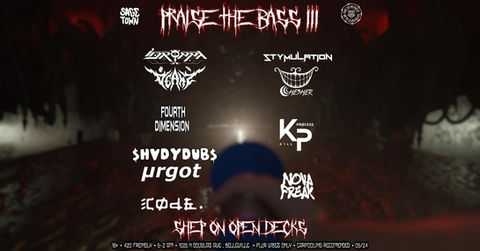

The Nunnery
Finding Inspiration in Every Turn

Once the home of the Ursuline Convent, now home to Convent Records
Convent Records
The Nunnery's transformation from its historical roots as the Ursuline Convent to its current incarnation as Convent Records represents a remarkable evolution in Belleville's cultural landscape. While once a bastion of religious devotion and education, the Nunnery now stands as a vibrant center for musical innovation and artistic expression.

Championing Emerging Talent:
At the heart of Convent Records' mission is a commitment to showcasing emerging talent and providing a platform for artists to explore their creativity without constraints. By prioritizing underground and experimental sounds, Convent Records cultivates a culture of artistic freedom and exploration, encouraging musicians to push boundaries and defy conventions.

Modern Reinvention:
Convent Records has breathed new life into the venerable halls of the Nunnery, repurposing the space to serve the needs of a new generation of artists and musicians. By focusing on bringing underground, local, and experimental sounds to Belleville, Convent Records has positioned itself as a trailblazer in the city's burgeoning music scene.

Cultural Impact:
Through its dedication to bringing underground and experimental sounds to Belleville, Convent Records is helping to shape the city's cultural identity and establish it as a destination for cutting-edge music and artistic innovation. By celebrating diversity, creativity, and individuality, Convent Records is enriching the lives of residents and visitors alike and leaving a lasting legacy in the city's cultural landscape.
In the hallowed halls of the Nunnery, a new chapter is unfolding—one of musical discovery, artistic experimentation, and community connection. With Convent Records at the helm, the future of Belleville's music scene looks brighter than ever, as the city continues to embrace its role as a haven for underground and experimental sounds.


History

In 1945, the sisters purchased this house to serve as their motherhouse in Belleville.
The histories of both the Belleville and Maple Mount communities follow a path from Brescia through Milan in Italy, then to Avignon and Bordeaux in France, and from there to Liège, Belgium. From Belgium, one group followed a call to Straubing, Bavaria, while another moved toward Ahrweiler in the Rhineland. Ten sisters left Ahrweiler in 1910, going from their imposing monastery, Calvarienberg, to new homes on the flat plains of North Dakota
The Sisters situation in North Dakota became strained. A new law forbade sisters in habit to teach in public schools. The bishop was pushing the community to separate from the German motherhouse — a move they were not ready for. In addition, in North Dakota there were no Catholic universities in which the younger sisters could pursue higher education. In 1942, at the invitation of Belleville Bishop Henry Althoff, the community transferred its regional headquarters to Illinois. By 1943, the only mission remaining in North Dakota was Kenmare, where the sisters continued to teach until 1962
A decisive moment came in 1930, when the bishop of Belleville, Ill., invited the sisters to staff a school in Fairmont City. Between 1930 and 1945, they accepted Illinois schools in Grand Chain, Millstadt, East Saint Louis, Mascoutah and Mounds.
In 1945, Belleville became the permanent site of the motherhouse. In 1947, the sisters elected their first American-born vicaress, Sister Barbara (Estelle) Jacoby, who served until 1950, and again from 1962-68. By 1961, there were 73 sisters in the community, which continued to be a Region of the German motherhouse. As the younger sisters pursued higher education, and as the Second Vatican Council (1962-65) recommended a more open approach to religious life, tensions between the German community and its American region increased.
.jpg)





















